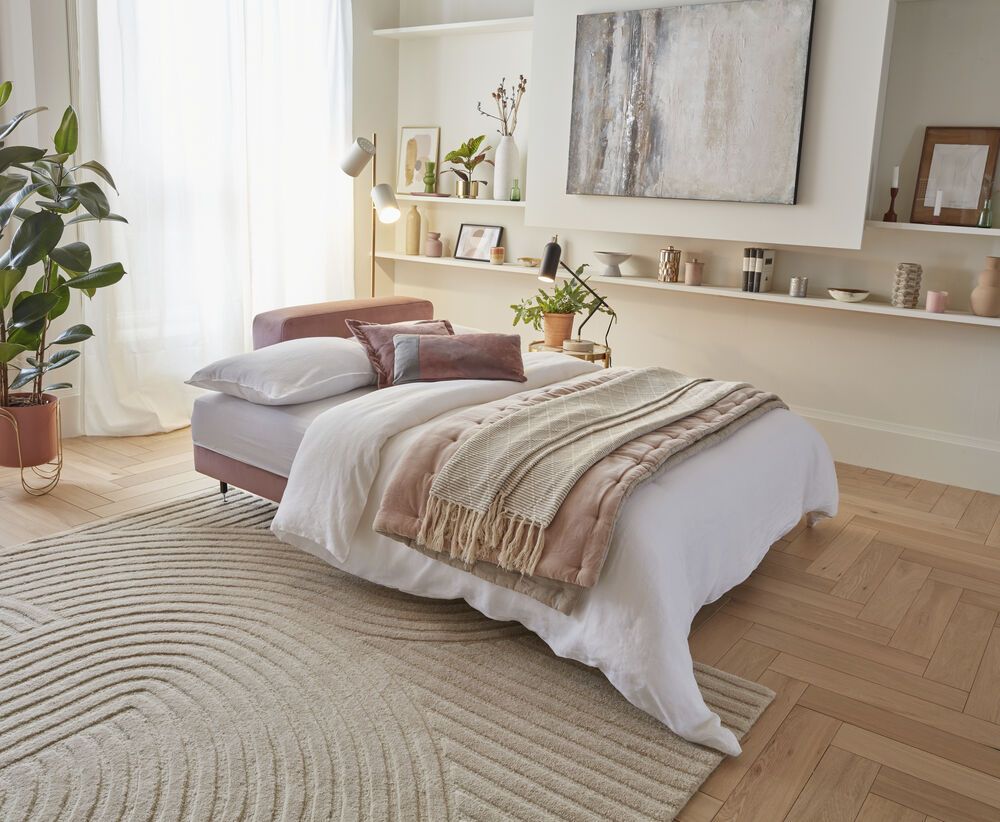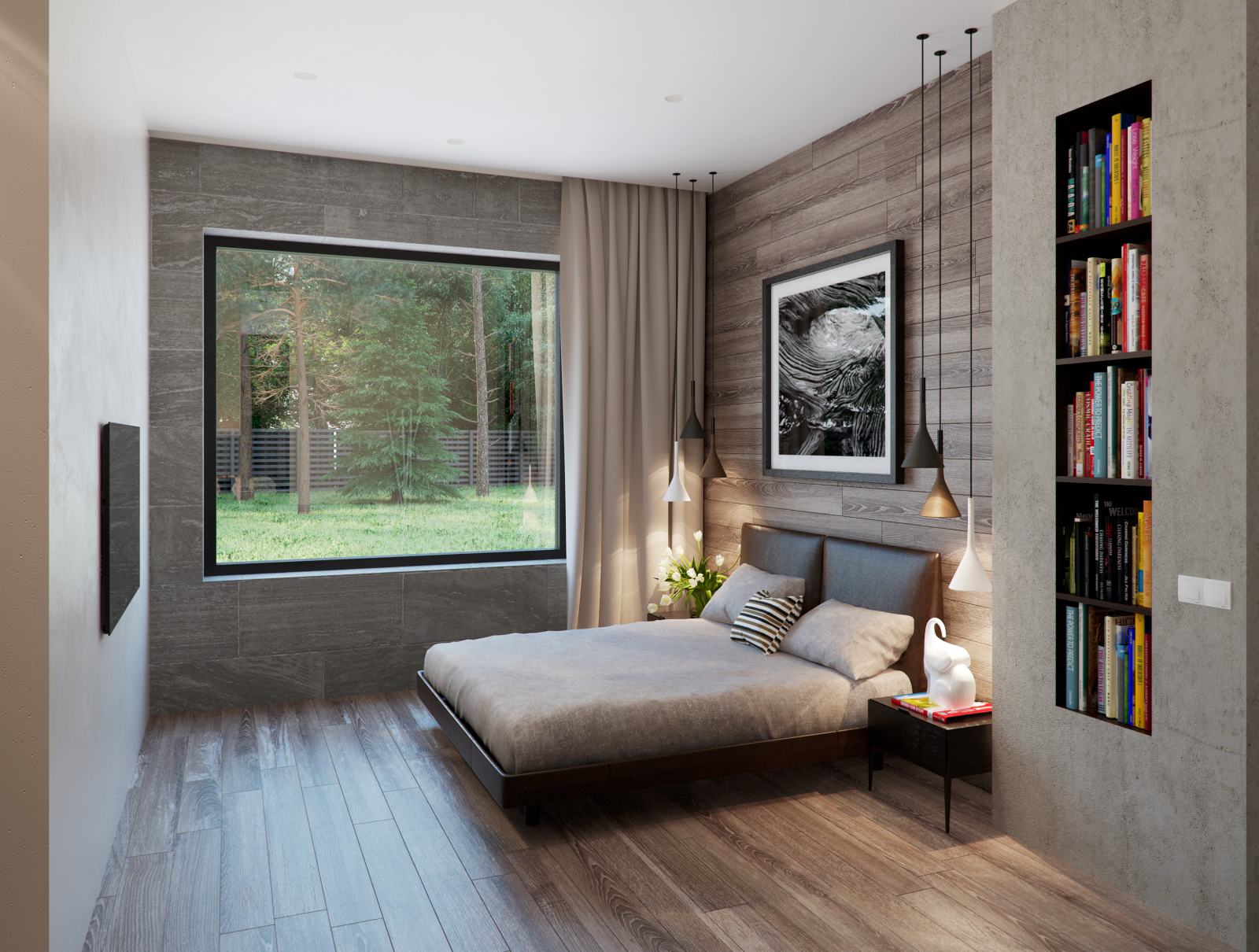Maximizing Space and Functionality: Staging A Small Bedroom

A small bedroom can feel cramped and cluttered, but with clever design tricks, you can make it feel spacious and functional. The key is to maximise every inch of space and utilise smart storage solutions.
Vertical Storage Solutions, Staging a small bedroom
Vertical storage solutions are a game-changer for small bedrooms. They help you utilise the often-wasted vertical space, creating a sense of spaciousness. Shelves, cubbies, and wall-mounted organisers are your best mates. Imagine a wall-mounted shelf above your bed for books, a cubby system for shoes, or a sleek organiser for your makeup and accessories. You can find these in all sorts of styles and sizes, so you can find something that fits your vibe and budget.
Furniture with Built-in Storage
Who doesn’t love a bit of sneaky storage? Look for furniture with built-in storage, like beds with drawers, ottomans that double as storage chests, and nightstands with shelves. This way, you can store your stuff without sacrificing precious floor space. Think about it, you can store bedding, clothes, and even books under your bed!
Optimizing Space and Layout
When designing your bedroom layout, consider the flow of the room and how you use it. Think about how you move around the space and make sure there’s enough room to walk comfortably. If you need a workspace, find a spot near a window for natural light. Don’t forget to think about the size and shape of your furniture and how it fits in the room. It’s all about making the most of every inch.
Bed Size Comparison
Choosing the right bed size is crucial for a small bedroom. Here’s a table comparing the pros and cons of different bed sizes:
| Bed Size | Pros | Cons |
|---|---|---|
| Single | Takes up minimal space, ideal for smaller bedrooms | May feel cramped for two people, limited storage space |
| Double | Provides more space than a single, can comfortably fit two people | Can be a bit bulky for a small room, less space for other furniture |
| King-size | Offers ample space for sleeping and lounging, perfect for a luxurious feel | Not recommended for small bedrooms, takes up a lot of space |
Choosing the Right Furniture

Choosing the right furniture for a small bedroom is crucial to maximizing space and creating a comfortable and stylish environment. You want to select pieces that are both functional and visually appealing, without overwhelming the room. Think of it as a balancing act – making sure you have everything you need without sacrificing the sense of spaciousness.
Furniture Scale and Layout
Choosing furniture that fits the scale of the room is key. Large, bulky pieces can make a small bedroom feel cramped and claustrophobic. Instead, opt for furniture with a smaller footprint and streamlined designs. This could mean choosing a compact bed frame or a slimline chest of drawers. When choosing furniture, it’s helpful to measure the space and plan out the layout beforehand. This will help you visualise how the furniture will fit and ensure that there is enough room to move around comfortably. Remember, you want to create a sense of flow and avoid any bottlenecks.
Mirrors to Create Space
Mirrors are a fantastic way to make a small bedroom feel bigger. They reflect light, making the room appear brighter and more spacious. A large mirror placed on a wall can create the illusion of depth, while a smaller mirror placed above a dresser or vanity can add a touch of elegance and reflect light. The key is to strategically place mirrors to maximise their impact. For example, placing a mirror opposite a window can reflect natural light and make the room feel larger.
Multi-Purpose Furniture
In a small bedroom, every piece of furniture should pull its weight. Consider investing in furniture that serves multiple purposes, such as a sofa bed or a desk that doubles as a vanity. A sofa bed can provide extra seating during the day and a comfortable sleeping space at night. A desk that doubles as a vanity can be used for both work and getting ready in the morning. Multi-purpose furniture is a great way to save space and maximise functionality. For example, a storage ottoman can double as extra seating and provide hidden storage for blankets, pillows, or other items.
Essential Furniture and Dimensions
Here is a list of essential furniture pieces for a small bedroom and their recommended dimensions:
- Bed: A standard double bed (4ft 6in x 6ft 3in) or a single bed (3ft x 6ft 3in) are both suitable for a small bedroom. If you have limited space, consider a platform bed, which can eliminate the need for a headboard and footboard.
- Wardrobe: A slimline wardrobe with sliding doors can save space compared to a traditional wardrobe with hinged doors. Aim for a wardrobe that is at least 4ft wide and 6ft tall.
- Chest of drawers: A chest of drawers can be used for storing clothes, linens, and other items. Choose a chest of drawers that is no more than 3ft wide and 3ft tall.
- Nightstand: A small nightstand is essential for holding a lamp, books, and other bedside essentials. Choose a nightstand that is no more than 2ft wide and 2ft tall.
- Desk: If you need a desk in your bedroom, choose a compact desk that can be tucked away against a wall or in a corner. Aim for a desk that is no more than 3ft wide and 2ft deep.
Creating a Sense of Calm and Order

A small bedroom can easily feel cluttered and chaotic, but with some clever design choices, you can create a space that feels peaceful and organized. This section explores how to achieve a sense of calm and order in your small bedroom.
The Impact of Color Choices
Color plays a crucial role in how we perceive space. Lighter colors, such as white, cream, and pale blues, can make a room feel larger and more spacious. This is because they reflect light, creating a sense of openness. Conversely, darker colors can make a room feel smaller and more enclosed.
Lighting Options for Functionality and Ambiance
Lighting is another important factor in creating a calming atmosphere. Natural light is always ideal, so try to maximize the use of windows. When it comes to artificial lighting, consider using a combination of different types of light sources.
- Overhead lighting can provide general illumination, while lamps and sconces can create a more intimate and relaxing ambiance.
- Dimmable lights are particularly useful for creating a cozy and inviting atmosphere in the evening.
- Avoid using harsh fluorescent lights, which can make a small bedroom feel sterile and unwelcoming.
Minimalist Decor for Personality and Calm
Minimalist decor is perfect for small bedrooms as it focuses on simplicity and functionality. This doesn’t mean your bedroom has to be boring! You can still add personality and style with a few carefully chosen pieces.
- A statement piece of art can add a focal point to the room without overwhelming the space. Consider a large abstract painting or a minimalist print.
- Plants can bring life and color to a small bedroom without taking up too much space. Choose small potted plants or hanging plants that can be placed on shelves or windowsills.
- Instead of a large collection of books, consider displaying a few favorite titles on a bookshelf or side table. You can also use decorative storage boxes to organize and display small items.
Tips for Keeping a Small Bedroom Organized
Keeping a small bedroom organized is essential for maintaining a sense of calm. Here are some practical tips:
- Utilize vertical space. Consider using shelves, drawers, and hanging organizers to maximize storage space.
- Invest in multi-functional furniture. A bed with built-in storage, a desk that doubles as a vanity, or a chest of drawers that can also be used as a bedside table can help to save space.
- Declutter regularly. Go through your belongings and get rid of anything you don’t use or need. Donate or sell items that are still in good condition.
Staging a small bedroom effectively requires careful consideration of color choices. A bold hue like royal blue can create a sense of depth and sophistication, but it’s important to balance it with lighter accents and ample natural light. For inspiration on how to achieve a successful royal blue paint bedroom, explore this comprehensive design guide: royal blue paint bedroom.
Remember, strategic use of color can make even a small bedroom feel spacious and inviting.
Staging a small bedroom effectively involves maximizing space and creating an illusion of greater size. One key element to consider is the choice of window treatments. Navy blue curtains, for example, can add a touch of sophistication and depth while simultaneously making the room feel more intimate.
Learn more about incorporating navy blue curtains in your bedroom and how they can enhance your staging efforts. The right curtains can draw the eye upward, making the ceiling appear higher and the room more spacious overall.
